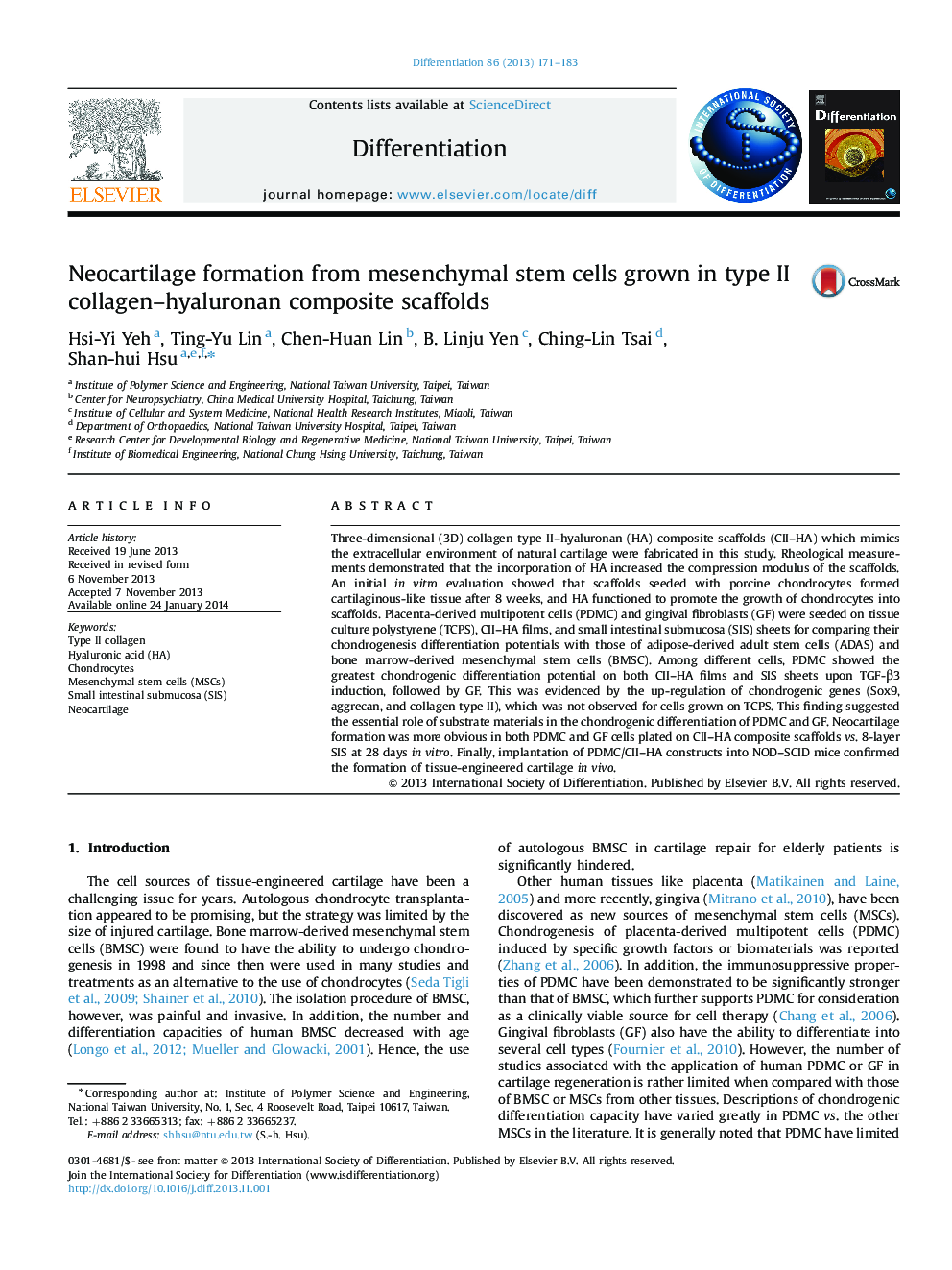| کد مقاله | کد نشریه | سال انتشار | مقاله انگلیسی | نسخه تمام متن |
|---|---|---|---|---|
| 2119405 | 1546798 | 2013 | 13 صفحه PDF | دانلود رایگان |

• Three-dimensional porous collagen type II–hyaluronan composite scaffolds (CII–HA) were successfully fabricated.
• The chondrogenic differentiation potential of placenta-derived multipotent cells and gingival fibroblasts were compared in 2D and 3D system.
• The substrate materials may be critical in evaluating the chondrogenic differentiation potential of MSCs.
• Neocartilage formation for placenta-derived multipotent cells grown on CII–HA was confirmed in vitro and in vivo.
Three-dimensional (3D) collagen type II–hyaluronan (HA) composite scaffolds (CII–HA) which mimics the extracellular environment of natural cartilage were fabricated in this study. Rheological measurements demonstrated that the incorporation of HA increased the compression modulus of the scaffolds. An initial in vitro evaluation showed that scaffolds seeded with porcine chondrocytes formed cartilaginous-like tissue after 8 weeks, and HA functioned to promote the growth of chondrocytes into scaffolds. Placenta-derived multipotent cells (PDMC) and gingival fibroblasts (GF) were seeded on tissue culture polystyrene (TCPS), CII–HA films, and small intestinal submucosa (SIS) sheets for comparing their chondrogenesis differentiation potentials with those of adipose-derived adult stem cells (ADAS) and bone marrow-derived mesenchymal stem cells (BMSC). Among different cells, PDMC showed the greatest chondrogenic differentiation potential on both CII–HA films and SIS sheets upon TGF-β3 induction, followed by GF. This was evidenced by the up-regulation of chondrogenic genes (Sox9, aggrecan, and collagen type II), which was not observed for cells grown on TCPS. This finding suggested the essential role of substrate materials in the chondrogenic differentiation of PDMC and GF. Neocartilage formation was more obvious in both PDMC and GF cells plated on CII–HA composite scaffolds vs. 8-layer SIS at 28 days in vitro. Finally, implantation of PDMC/CII–HA constructs into NOD–SCID mice confirmed the formation of tissue-engineered cartilage in vivo.
Journal: Differentiation - Volume 86, Issues 4–5, November–December 2013, Pages 171–183